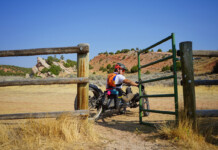By David Treinis
The time-honored encouragement from one all-mountain rider to another is to “go big.”
So nothing should have seemed particularly out of the ordinary for riders and onlookers watching David Poole approach modest kickers on Grand Targhee’s trail features on Labor Day weekend 2015. Or seeing Jake O’Connor aggressively leaning into the high-banked berms on the hill’s “Bullwinkle” switchbacks, with Sherene Ricci in hot pursuit, occasionally catching some air on the table-tops as they neared the Dreamcatcher chair lift.
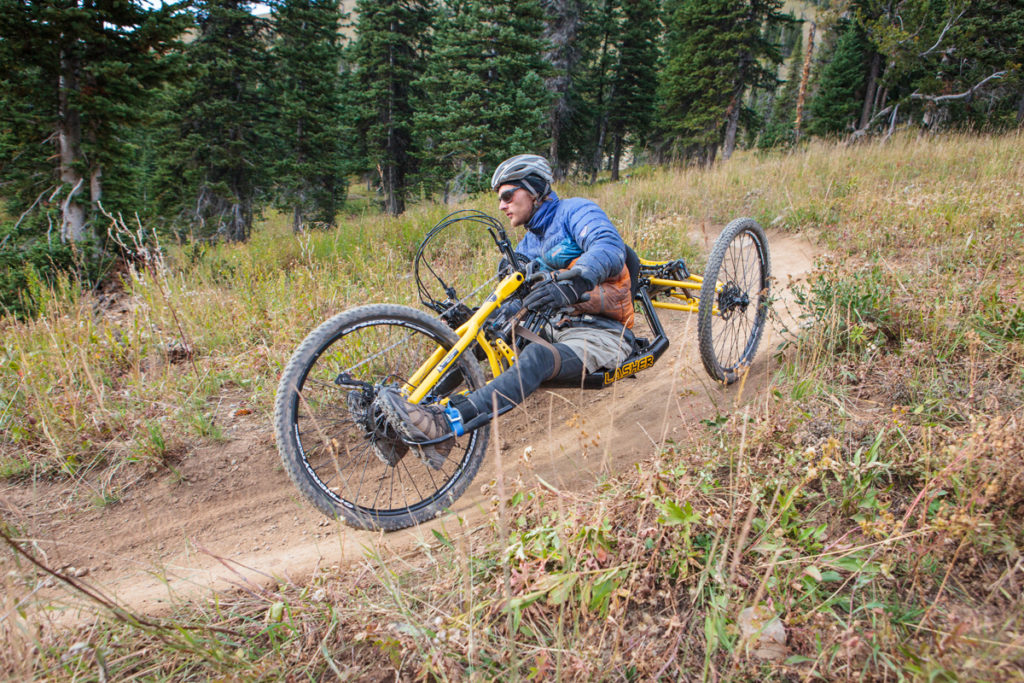
What was it, then, about these three riders on blue runs that had attracted a small crowd of spectators, pumping their fists and cheering in a collective show of awe and appreciation?
What is was, was this: each of them was riding with such gusto and abandon despite being disabled. Sherene “Lefty” Ricci lost a leg to an aggressive cancer; Jake and David suffered accidents that rendered them paraplegics.
The kudos for these three—and the half- dozen more in their cadre—was in recognition of their skills and daring in taking their “adaptive mountain bikes/trikes” on the very same trails with the other riders. Each of the courageous athletes in this group had a story that would give any able-bodied rider pause, and they’d gathered at 2015 Wydaho Rendezvous Mountain Bike Festival to show they were not about to yield to disability.
Joe Stone, an “incomplete” C-7 quadriplegic from a near-fatal paraglider crash, was the first adaptive rider at the Festival and been a regular attendee and contributor the last several years, each time bringing with him more adaptive cyclists also drawn to the allure of Teton trails, mountain weather, and camaraderie. On breaks between runs, he chats with curious riders, as always the eloquent and passionate spokesman for adaptive riding.
“Prior my injuries I was an active outdoorsman, so I ached to get back on the trails and rivers, doing the things I’d always loved. I especially missed mountain biking, so it wasn’t long into my recovery before my internet searches turned me on to adaptive off-road riding,” Joe explained, gesturing to the burly three-wheeler on display beside him.
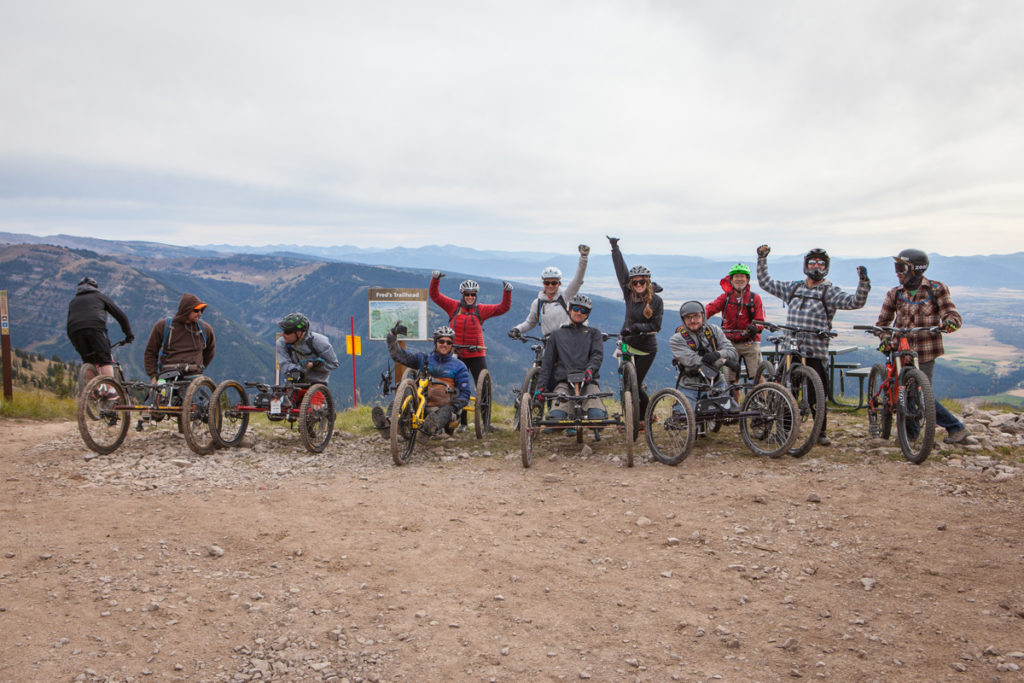
To the uninitiated eye, an adaptive bike strikes an image worthy of a Rube Goldberg contraption. Chains, pivots, cogs, straps and grips are arranged in a bewildering sequence atop a chassis that looks like a diminutive top-fuel dragster pointed backwards. So it’s fortunate that manufacturer Jake O’Connor, founder of Reactive Adaptions, rolled his wheelchair up to Joe’s tent just in time to explain the impressive and clever technology behind these truly capable machines.
“The ‘Bomber’ is designed for a rider in the prone body position, allowing him or her to leverage bodyweight over the crankset and as well as assess the terrain ahead,” Jake explained. Turning his attention to another adaptive bike on display, he continued. “The ‘Nuke’ model, by contrast, was developed for riders who prefer a recumbent style.”
“Makes and models vary in features and performance, but all off-road adaptive bikes offer suspension, gearing with derailleurs, disc brakes, and knobby tires—all the features of conventional mountain bikes. There are even fat-bike variants.” Jake added that, “Platforms aside, the biggest differences between adaptive and conventional riding are 3 wheels, and that most use hand cranks to pedal.”
In addition to the sophisticated offerings from manufacturers like Jake, adaptive off-roading inevitably piques the interest of garage band tinkerers like David Poole.
“My homemade ‘bucket bike’ mates a full-suspension mountain bike frame with a sit ski seat. Once I strap my feet to the pedals and head downhill, my technique is pretty much the same as the able-bodied riders on the trail.” David paused for effect and added, “Except that once I’m rolling, I’m committed.”
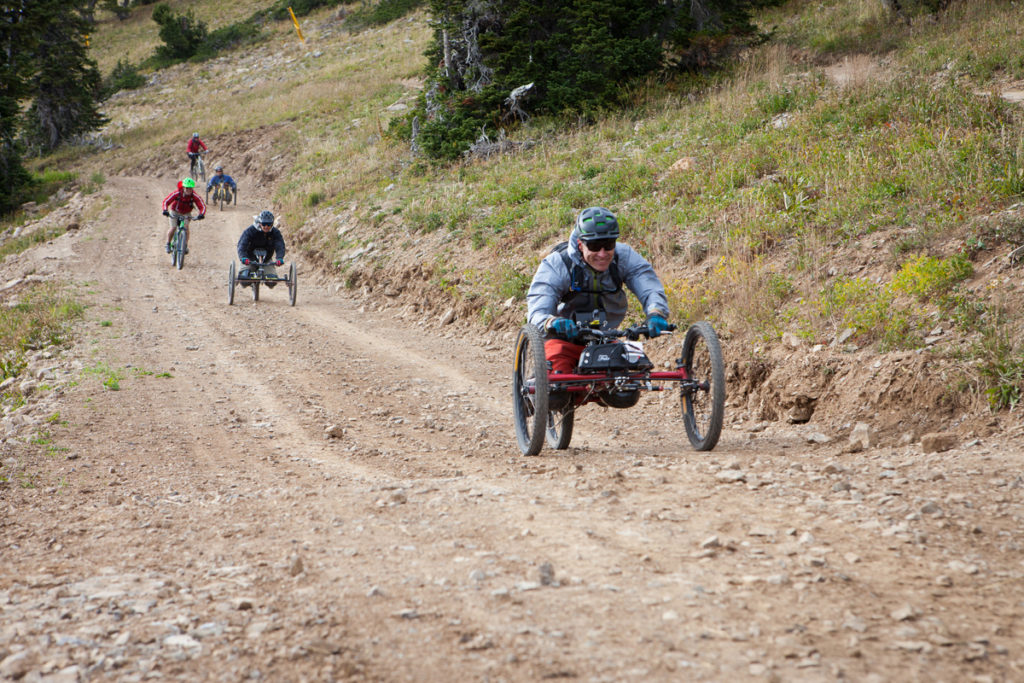
His last comment led to the obvious question of what happens on an uphill section—say, a roller on an otherwise DH run that would normally require a few pedal strokes. It turns out his companion-rider (who doubles as hero-footage cameraman) simply puts a hand to David’s shoulder and pedals with just enough energy to keep them both from stalling.
“Sometimes,” he laughed, “that doesn’t quite work out as planned.” Looking more closely at the adaptive group, I noticed that most of these enthusiastic riders sport a few scrapes and bruises that are the badge of honor in mountain biking.
Both individually and as a group, these riders are undaunted. When on the last day of the previous year’s Wydaho it rained hard enough to chase nearly nearly everyone else off the trails, the adaptive group remained out in force. Soaking wet, cold, muddied and tipped over on occasion, they all agreed it was one of the best days of the Festival. “We had the trails to ourselves,” recalled Joe, “plus the Festival organizers held a raffle just for us, sending us on our way with lots of cool swag and free gear.”
Being at home on the most of Targhee’s trails, I reckoned that hand-cycling on a beginner run would prove little challenge for me. Approaching the first, embarrassingly small rise revealed I was in over my head from the get-go. Arms burning from pedaling furiously on the hand-cranks, I was saved from rolling backwards only by a timely shove from a sympathetic bystander.
No sooner was I over the top than I was faced with a far more threatening challenge: changing gears, braking and turning, not to mention doing my best to avoid tipping over in the too-fast-approaching banked corner. I went from being cocksure to looking like Chevy Chase leading up to a pratfall, heading for the inevitable digger. I held it together for my short demo ride, though thinking all the while, “How in the world do adaptive riders rail on these things?”
I figured maybe it might be smarter, not to mention safer, to learn hand-cycling first by watching it being done properly. So I mounted my two-wheeled trail bike to join a run with the adaptive riders. In the interest of saving the proverbial thousand words as well as the remaining shreds of my dignity, I’ll let the photos tell the story of our group ride on an all-mountain trail.
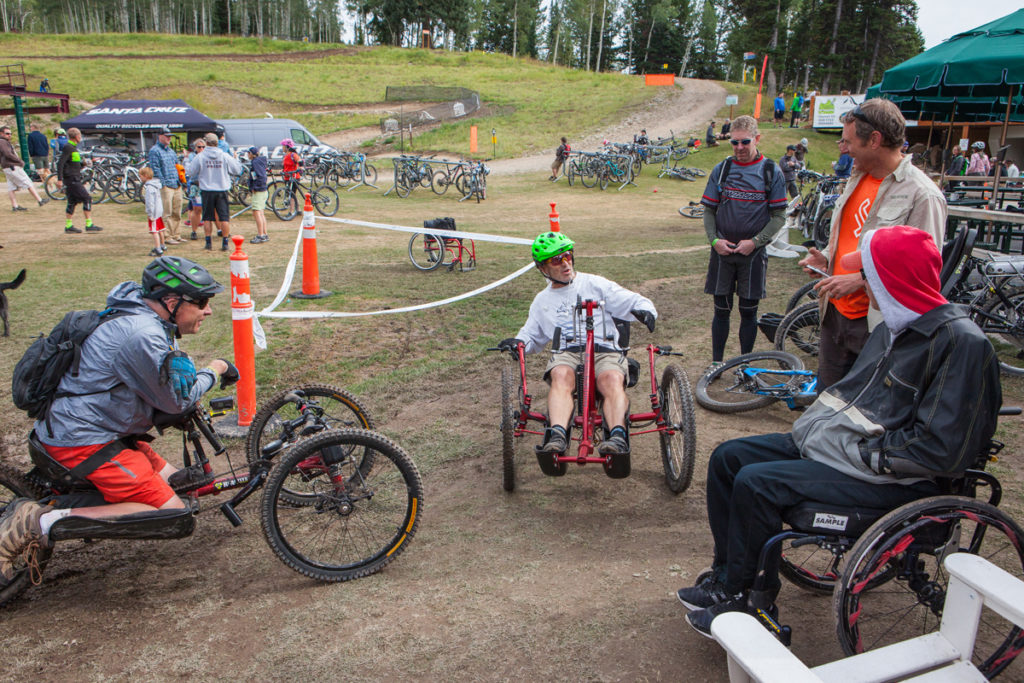
Behind these individuals at Wydaho Rendezvous were at least three key organizations dedicated to serving the needs of adaptive athletes: Teton Adaptive Sports, The National Ability Center, and Higher Ground. “People with disabilities are more than capable of enjoying a wide range of outdoor activities but often are held back by the cost of the gear and the support needed to get them started,” observed Steve Robinson of the NAC. “Our organizations try to fill that gap by providing skills training, adaptive equipment and a supportive environment.”
Joe Stone’s neon-orange tent serves as central gathering spot for the adaptive riders and their gear at each year’s Wydaho. If there’s one common thread among the disabled riders assembled there, it’s their evangelical zeal in encouraging others with disability to get back fully into active lives. “Just 25 years old, and I thought my life was essentially over, that I’d never again get to enjoy the things that meant so much to me prior to my accident,” said Joe. “But adaptive off-road cycling offered me the chance to ride the same trails, with the same joy and thrill, as able-bodied cyclists.”
Sherene echoed Joe’s sentiment, adding, “I’ve learned there are many ways to adapt and be fully engaged with life in spite of my disability,” she said with confidence. “The only limitation we truly face is that of overcoming what we perceive to be our limit.”
For more information on the various organizations mentioned in the story, see:
Wydaho Rendezvous: tetonbikefest.org
Teton Adaptive Sports: tetonadaptivesports.com
Jake O’Connor/manufacturer: reactiveadaptations.com
Joe Stone Foundation: meetjoestone.com
Mountain Bike Tetons: mountainbiketetons.org
National Ability Center: discovernac.org
See also: Wasatch Adaptive Sports wasatchadaptivesports.org
Teton Mountain Bike Festival Details:
Teton Mountain Bike Festival, Alta, WY, held at Grand Targhee Resort. Come enjoy endless miles of cross-country, singletrack, dirt road, lift-served downhill, jump park, freeride, and an IMBA Epic Trail, tetonbikefest.org, grandtarghee.com
Author David Treinis was a member of the founding committee for Wydaho Rendezvous, for which he continues to serve as an advisor. He lives in the Teton foothills of Alta, “Wydaho,” so he hardly ever puts his bike on his car.
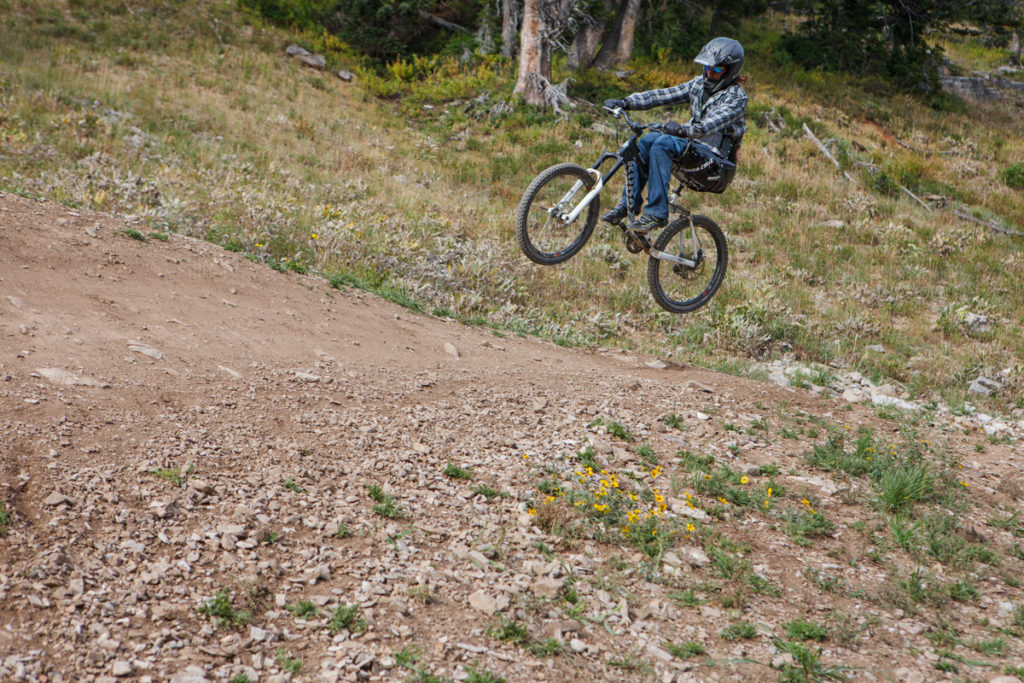
Photo by Eric Helgoth, helgothphoto.com



